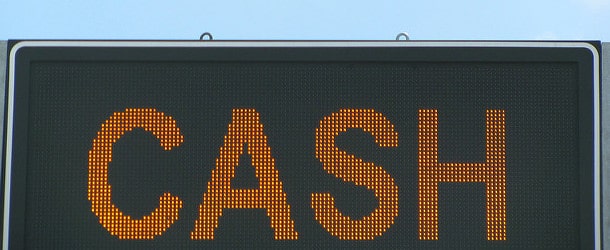loanDepot Digital HELOC Launched: Paperless Process and Funding in as Little as 7 Days

Direct lender loanDepot has launched a so-called “Digital HELOC” to help homeowners tap into their massive amounts of home equity.
The Southern California-based company cited the fact that the average homeowner now has roughly $300,000 in home equity, per a CoreLogic report from September.
While they might not have as much today, thanks to recent pressure on home prices, millions of Americans do have home equity that is ripe to be tapped.
This is especially true if they need cash and hold a low fixed-rate mortgage in the 2-4% range.
With first mortgage rates now above 7%, a second mortgage such as HELOC could make a lot more sense than a refinance.
How the loanDepot Digital HELOC Works
As the name suggests, the Digital HELOC from loanDepot is a paperless, 100% digital application process for a home equity line of credit (HELOC).
Instead of requiring meetings, phone calls, and trips to the bank, the company says you can apply for their HELOC from the comfort of your couch.
Potential customers can obtain no-obligation quotes without impacting their credit scores, and go from quote to close in as little as seven days.
Once you submit an application, a hard inquiry to one or more of the consumer reporting agencies will land on your credit report.
And like a first mortgage, the company will still need to perform income, asset, and employment verification.
But thanks to new technology, much of this can be done paperlessly and digitally, by linking accounts and plugging in data sources.
loanDepot also notes that funding timelines could be extended if additional time is needed to perform a desktop appraisal.
But all in all, the underwriting process is expected to be fast. And there are no third-party fees and no prepayment penalty.
loanDepot Digital HELOC Allows Loan Amounts as High as $250,000
With regard to the HELOC itself, homeowners can access between $50,000 and $250,000 of their home equity.
The line is repaid via a 10-year interest-only period followed by a 20-year variable repayment term.
During the initial 10-year interest-only period, you can make additional draws if needed as you pay down your original line.
A minimum of 75% of the requested line amount (minus the origination fee) must be drawn at the time of funding.
For example, if you get a $100,000 line, you must initially take $75,000, less the origination fee.
Speaking of that fee, it’s 2.5% (unless otherwise limited by state law) for any application received no later than December 15th, 2022.
On a $100,000 line, you’d be looking at $2,500 in origination costs. It’s unclear if they charge other closing costs as well, but they do note there aren’t third party fees.
Once the 10-year interest-only period ends, you must begin making fully-amortized payments including principal and interest for the remaining 20 years.
At the moment, the loanDepot Digital HELOC is available in Arizona, California, Florida, Pennsylvania, and Washington.
As part of their phased national roll out, they expect it to be introduced in more states across the country by early 2023.
How to Determine If a HELOC Is a Good Deal?
HELOCs are tied to the prime rate, which is the same for everyone and basically dictated by the feds funds rate.
At the moment, it’s a fairly high 7%, up from 3.25% in early 2022. It’s expected to rise to 8% by early next year, but then perhaps top out.
While you can’t control the prime rate, you can shop around and find the lowest margin, which together with the prime rate determines your fully-indexed rate.
For example, one company may have a margin of 1%, while another has a margin of 2%.
If prime were 7%, you’d be looking at a rate of 8% or 9%, respectively. So pay attention to margin.
Additionally, keep an eye on the origination fee. This is what the bank or lender charges for taking out the loan.
If you can find a company that only charges a 1% origination fee, that’d be a win. Also pay attention to any closings costs, annual fees, and prepayment penalties.
Like a first mortgage, put in the time to comparison shop and obtain multiple quotes. Also look at closed-end, home equity loans that come with a fixed interest rate.
In recent months, several banks and mortgage companies have launched second mortgage products as an alternative to a cash out refinance.
Read more: Cash out vs. HELOC vs. Home Equity Loan
Comments are closed.